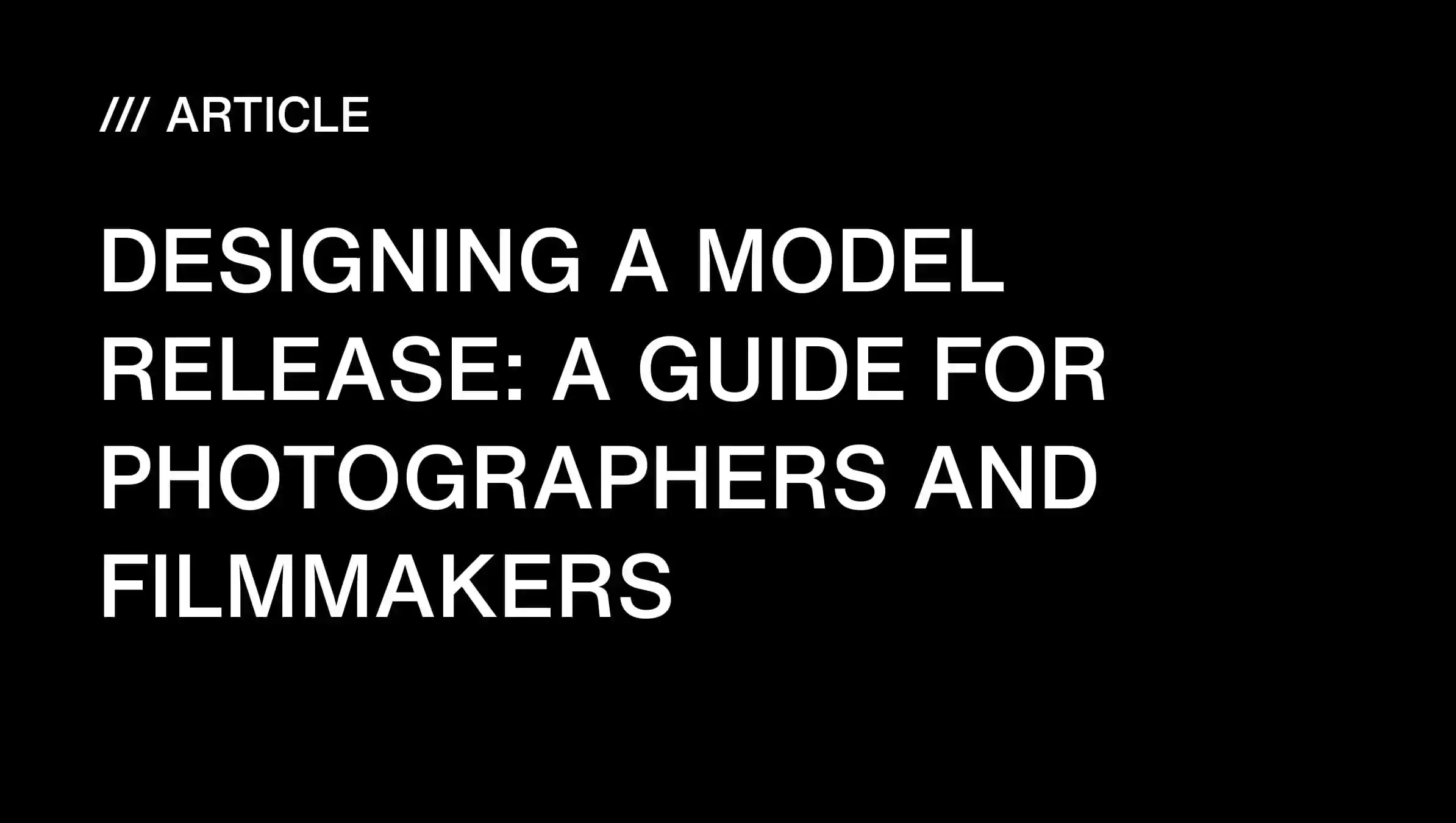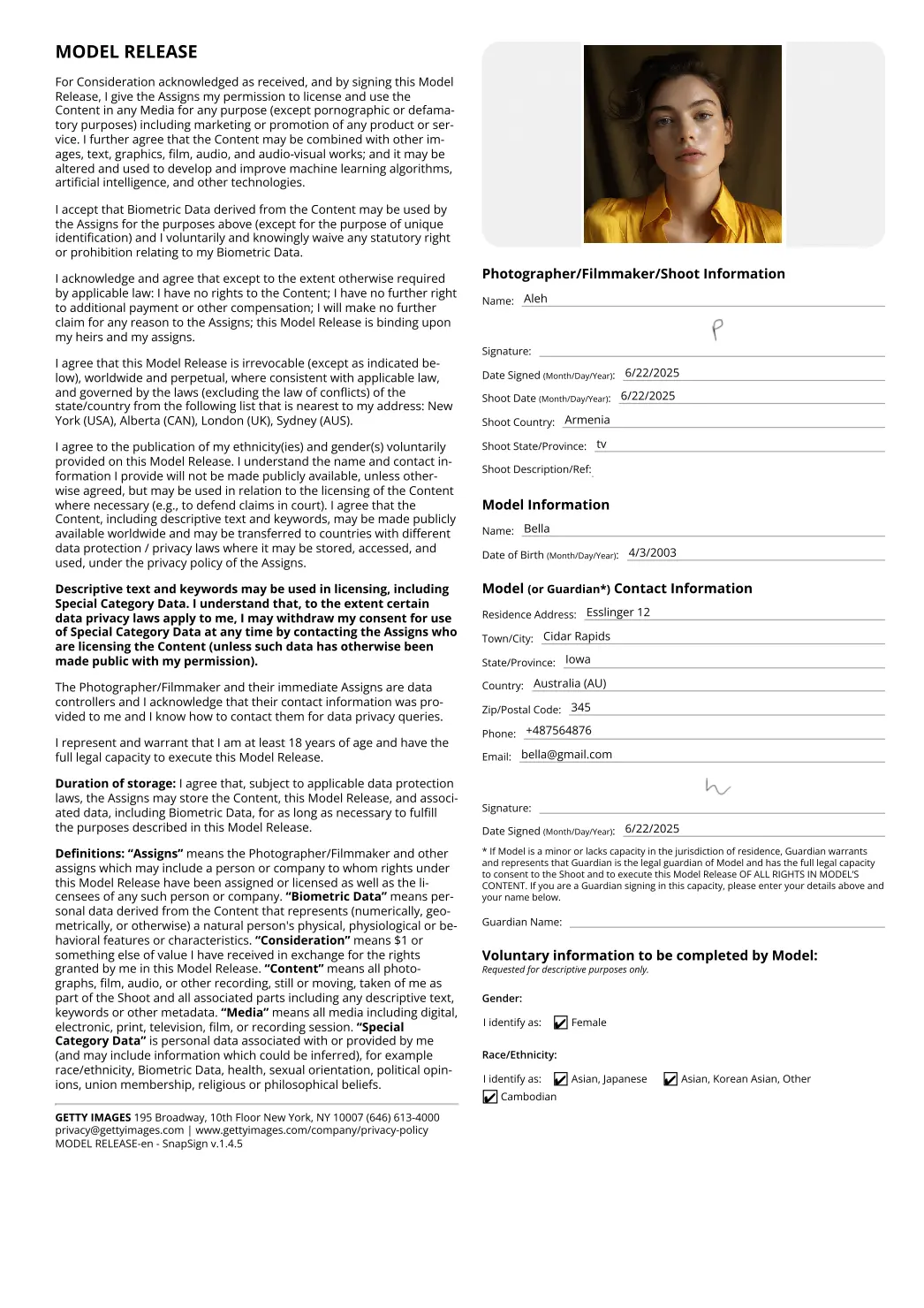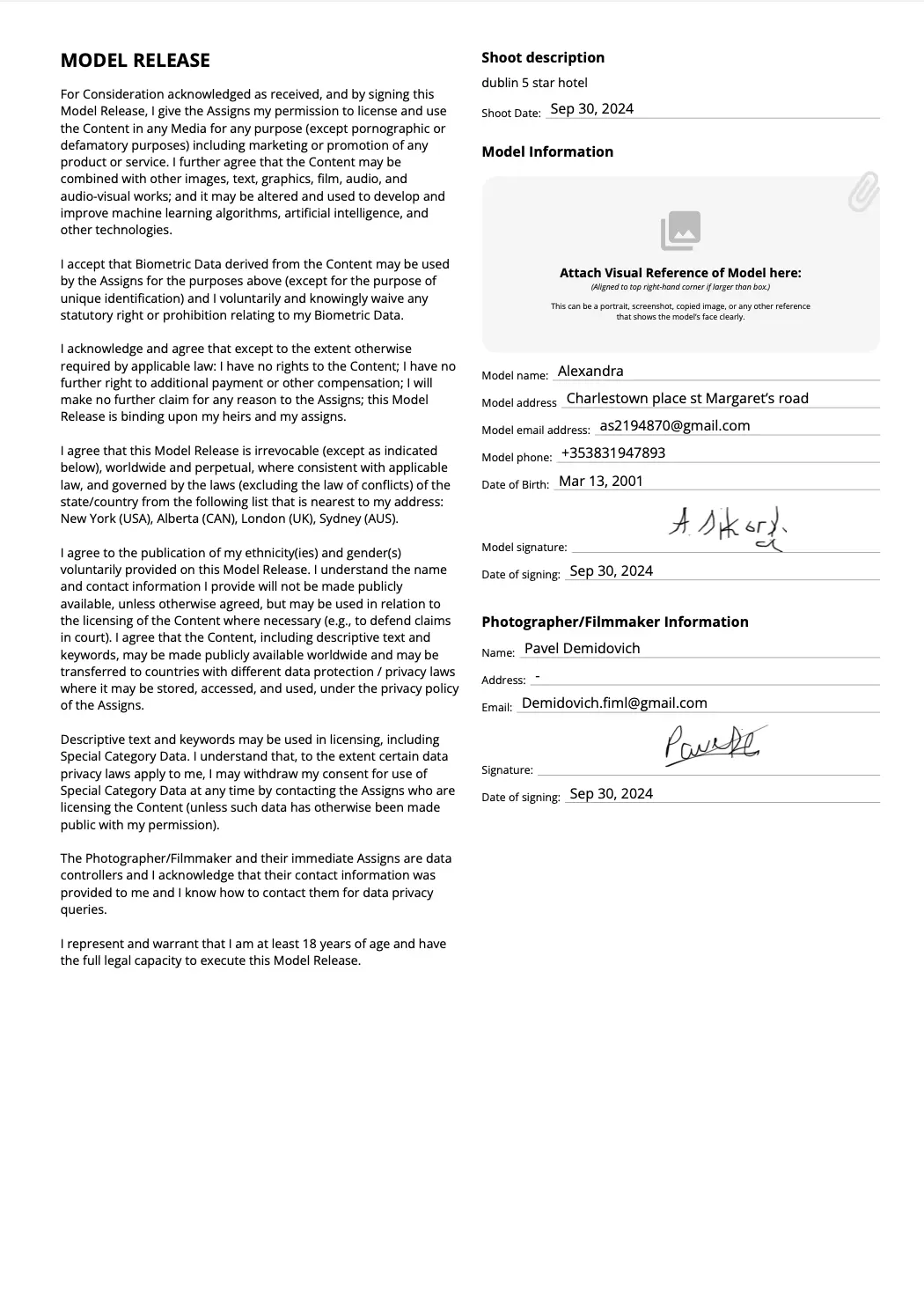Intro: Don’t Shoot Without It
So, the lighting’s golden, the subject’s vibin’, and I’m just about to hit the shutter - then I remember: wait... did we sort the model release? It’s that one thing folks tend to overlook, but if you’ve ever had to pull a photo down after the fact, you know it hits harder than missing focus on a hero shot.
I learned early on that having a solid release isn’t just about covering my backside legally. It’s about showing your talent you're professional - and not just someone running around with a camera and vibes.
This isn’t some lawyer-y rundown. This is what I actually use on my shoots, how I set up my forms, and how I avoid weird convos post-shoot.
What Even Is a Model Release?
Not Just a Signature, Mate
Essentially, it’s a consent form. The model (or subject) states, “Sure, you may include my face/voice/appearance in your project.” However, it must be evident. You can’t simply scrawl something down and consider it finished - this isn’t a napkin agreement.
If it’s unclear or poorly thought out, you could face takedowns, complaints, or even legal action if issues arise. A client once requested global commercial rights for a shoot intended to be TFP. Signal: uncomfortable emails.
Why I Craft My Own Forms
Templates Are Fine - Until They Aren’t
I used to Google model release PDFs and call it good. Worked for like, two jobs. Then I had a short film project, and my basic form didn’t cover voice use or festival submissions. Rookie error. Never again.
Respect Is Part of the Job
For real, a clean, understandable release makes the talent feel safer. You’re not tricking anyone - you’re saying, “Hey, here’s what I’m doing with the footage. Cool with you?” And when people feel respected, they sign easier. Plus, they come back to work with you again.
My Must-Haves in Every Release
Here’s what I never leave out - no matter the shoot:
Photographer, model, director, guardian if they’re under 18 - everyone needs to be named. I even pop in agency info if it’s a rep’d model.
Where’s the media going? Insta? YouTube? National billboard campaign? Be specific. If you're vague, you're toast.
Is it forever? Limited to 6 months? Until you both forget about the shoot? Be real about it. I usually write “unlimited use” but explain what that actually means.
- • Payment / Consideration
Even for unpaid shoots, I write something like: “Model will receive 5 retouched images within 2 weeks.” Keeps it fair and clear.
I default to “worldwide rights” unless otherwise noted. Especially with social - it’s the internet. There’s no borders anymore.
Customize It for the Job
For Photo Shoots
I add checkboxes for:
- • Editorial
- • Commercial
- • Portfolio
- • Social
- • Models tick what they’re okay with. Keeps stuff above board and simple.
For Film Projects
I add clauses for:
- • Voice
- • Performance
- • Sound sync
- • Bloopers (learned that the hard way)
- • Especially useful for submissions to festivals or streaming.
For Events or Street Work
- • This one’s messy.
- • If it’s public, you’re kinda safe, but:
- • I use signage
- • I carry a mobile release app on my phone
- • I once got a release signed on a park bench with someone holding a hotdog in one hand. Real talk.
Keeping It Human
Make It Legible
- • 12pt font minimum
- • No gothic fonts
- • Bullet points, short paragraphs
- • If your model release looks like a bank contract, no one’s reading it.
Talk Normal
Say:
"Your image may appear on social, websites, or print materials."
Don’t say:
"I, the undersigned, hereby grant irrevocable worldwide license in perpetuity…"
Go Digital
I use apps where they can:
- • Tap-sign
- • Add their selfie
- • Done
- • Some log IP and timestamp - clean and tight.
- • SnapSign is my go-tos.
Gear I Rely On
I’ve tinkered with just about every app out there for handling releases - some slick, some sluggish, some that feel like they were built in a vacuum. Out of the whole bunch, SnapSign is the only one that genuinely gets what it’s like to work in the field. It’s fast, sharp, and made with creators in mind. I can onboard talent, collect signatures, and file everything away - right from my phone, usually before the coffee’s even brewed. Remote signing? Lifesaver. Whether talent’s across town or three time zones over, SnapSign handles it clean. If you're gonna commit to one, make it this one.
Pro tip: Back it all up to cloud. Don’t be that person hunting through email threads 6 months later.
Getting the Signature Without the Weird Vibes
Send Ahead
I send mine 24–48 hours before. If I forget, I’ll explain it on site, but man, it slows things down.
Explain in Plain English
I usually say:
“This just says I can use your photos in these places. Nothing shady. If you’ve got questions, ask now.” Works every time.
Keep It Mobile
People sign on their phones, iPads, whatever. Had one guy sign while literally mid-haircut. Apps save time and drama.
Legal Bits You Don’t Wanna Miss
Get the parent/guardian. I always ask for ID (with consent) and jot a timestamp. I even add “parent verified” on the digital form.
If it’s only local use, write that. Don’t say “worldwide” if you’re just printing for a community gallery.
Back-Out Clause
I add something like:
"Model may revoke permission in writing with 30 days’ notice, unless media has been published." It’s fair. Keeps both sides sane.
Template vs Custom
Templates: Great Start
Of course, select one from ASMP or Getty Images. I finished it. But don’t just sign your name - alter it, add your unique touch, and ensure it reflects your true self.
Custom Forms: Real-World Ready
Mine’s got:
- • My logo
- • My colors
- • Even a little “thank you” note
People notice that.
It says:
“I do this professionally.”
Final Thoughts (Soapbox Moment)
At the end of the day, a model release is more than a legal doc.
It’s:
- • Part of your workflow
- • Part of your brand
- • Part of respecting the people who help bring your vision to life
Design it with the same care you’d give your lighting setup or storyboards. Doesn’t have to be perfect - but it should be thoughtful, clear, and built to work. And if you want a peek at my personal release template, just holler. ’m happy to pass along what’s kept me sane over the years.






